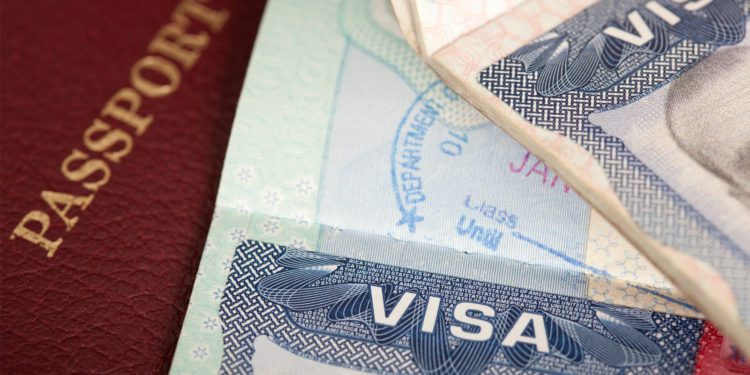5 Things Business Aviation Operators Should Know About Flight Crew Visa Requirements

This business aviation blog post is the first part in a series on flight crew visas.
Many countries require crew to obtain specific “crew” visas. Flight crew members continue to encounter visa issues here and there around the world on a fairly regular basis. It’s important to always verify the correct visa type needed to enter your intended destinations worldwide. Crew visa issues can be avoided with adequate advanced planning. Multiple entry visas are usually a preferred option, particularly for those countries you intend to travel to frequently. Additionally, many crew members take the precaution of carrying a second passport. This allows one to be submitted for visas while having a backup ready in case of a short-notice trip.
1. Knowing flight crew visa requirements
While some countries allow flight crew members to enter without visas (or with a business visas), many require specific “crew” visas. China, for example, is very particular about crew having “C”-type visas. For instance, if you’re operating an aircraft to or from China and do not have a crew visa, you may be fined or subject to deportation. In terms of visa planning, it often makes a difference how you enter and exit a country. For example, if you enter China on a commercial carrier and depart as a crew member, you’ll need an “L”- or “F”-type visa to enter and a “C” visa to depart. Visa glitches can be avoided by working on these requirements in advance with a visa or 3rd-party provider.
2. Understanding visa documentation
In applying for crew visas, you’ll need to provide passport details. Certain countries also require pictures, an invitation letter, length of stay (itinerary) and crew position (i.e., Captain, Second In Command, etc.). Some countries, such as Brazil, do not require visas for crew members on duty with crew certificates such as an Airline Transport Pilot License (ATP). However, they must be listed on the general declaration and have a crew I.D. with a photo on it. Additionally, crew members such as flight attendants and flight engineers must have visas unless they have appropriate certification like a Federal Aviation Administration (FAA) license. Nevertheless, there have been problems at Brazilian airports (for example, customs inspectors have insisted that all crew members require visas), so it’s always recommended to obtain visas prior to arrival. We suggest you check with a visa provider or other 3rd-party provider about requirements for each location. For example, India requires an invitation letter from your local sponsor, and Russia usually wants a support letter from your hotel in order to process a visa application. Some Chinese embassies still ask for a sponsor letter, even though that regulation no longer exists. If they do request a letter, please refer them to internal document 119. For “‘C’”-type visas for China, you’ll need to provide a letter (on company letterhead) with the aircraft registration, aircraft type, schedule while in China, purpose of flight and crew members’ information.
3. Understanding options in obtaining visas in advance
You have the option of obtaining flight crew visas directly from an embassy or by working with a visa provider. In some cases, depending on the country, (when possible) a 3rd-party provider may be able to assist in obtaining visas on arrival for short-notice requests. A visa provider can obtain visas in a more expedited fashion, but this service is usually more expensive. The process of obtaining visas directly at embassies may take longer, and someone will have to physically wait in line to submit the required information. We recommend applying for multi-entry visas when possible and having a second passport to provide short-notice trip backup options while visas are being processed on the primary passport. It’s also a good idea to have visas in place for backup pilots if the primary crew is not able to fly on the day of flight or if a new crew must be repositioned to another location on short notice.
4. Obtaining visas on arrival: Pros and cons
Visas on arrival can be obtained at some locations. However, this takes time and is usually only valid for a limited period – often just 72 hours. We always recommend obtaining visas in advance to avoid last-minute problems and to cut down on crew duty time on arrival. Also, it’s best to check with your 3rd-party provider on the possibility of obtaining visas on arrival, as regulations may change without prior notice. It’s always best practice to obtain visas prior to arrival to avoid problems.
07/19/2013: Updated by the author
5. Utilizing a 3rd-party provider to arrange flight crew visas on arrival
At certain locations, 3rd-party providers can work with local ground handlers to help obtain visas on arrival. All required documentation will be submitted to the ground handler, who will obtain visas for the crew. Advance notice to set up a visa on arrival varies by location but usually ranges from 24 hours to 7 days. Always verify advance notice requirements with the 3rd-party provider and confirm that visas on arrival are obtainable at your intended destination and planned time of arrival. Visas are usually temporary and valid for only a few days at most. On occasion, the 3rd-party provider or ground handler may be able to help crews extend visas, but the local airport authorities will make the final determination on visas.
Questions?
If you have any questions about this article, contact me at russellhess@univ-wea.com.
Later, we’ll discuss flight crew visa rules, risks and risk avoidance.




